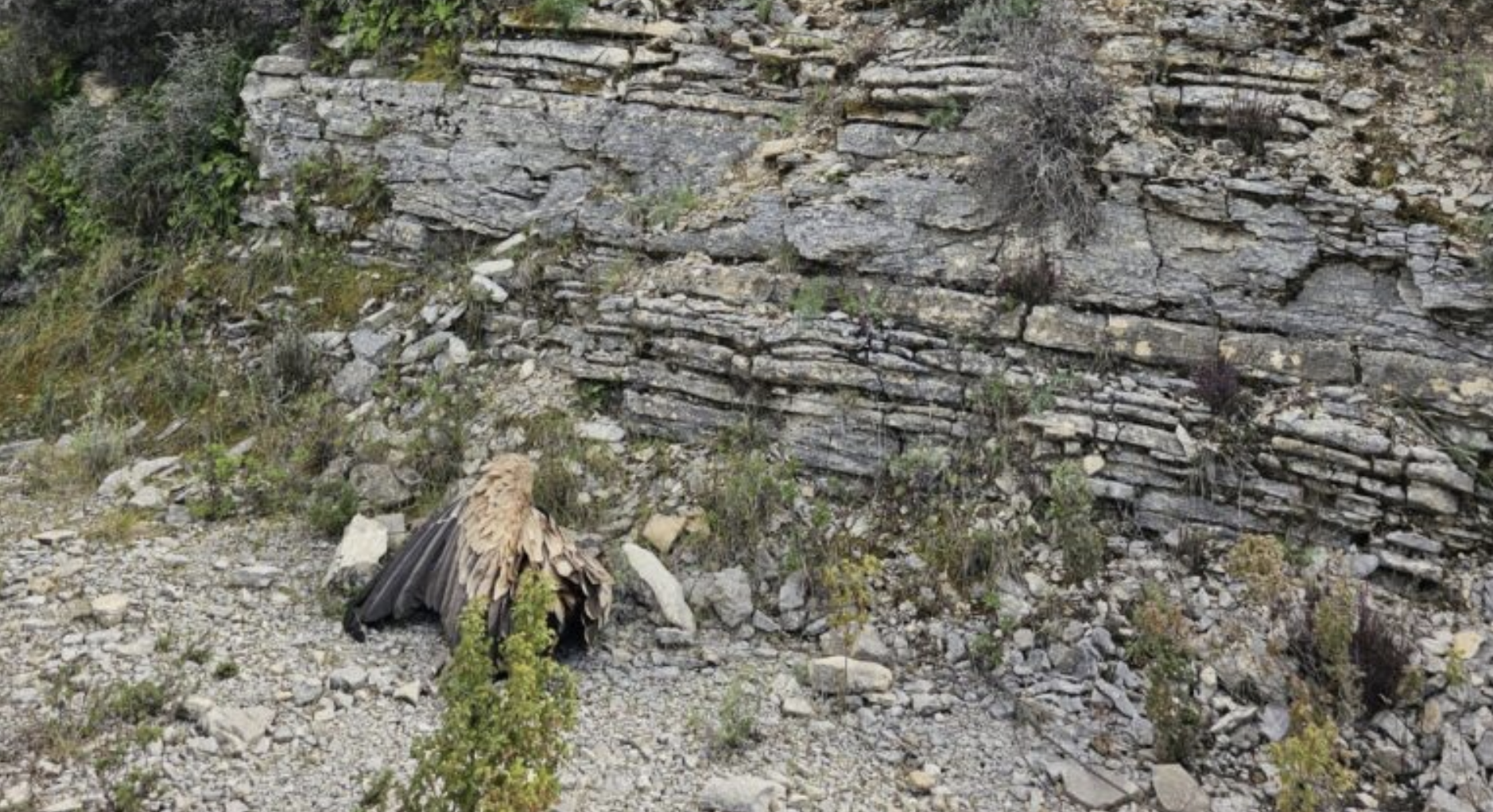
Kostis’ story began about a year ago when it was still the one and only egg in a nest of a Griffon Vulture breeding pair in Cyprus. The LIFE with Vultures project team monitored the nest since the start of the breeding period until the little one hatched and fledged. Then, the team encountered Kostis again after the bird needed help and was rescued. Now, the young bird made a recovery and returned to the wild!
Monitoring activities during the breeding season

It all began last January, when, during BirdLife Cyprus’ winter Griffon Vulture census, they confirmed the existence of two active nests on the secluded and inaccessible cliffs of a remote Paphos valley. The fact that two Griffon Vulture pairs were nesting this year was particularly important, especially because the species is on the verge of extinction in Cyprus. So, as part of the LIFE with Vultures project, the project team began to regularly monitor the two nests to make sure that the chicks were growing well and fly successfully when the time came.
The Griffon Vulture breeding season lasts around ten months, starting as early as November – December with the formation of territorial pairs, and lasting until August – September when the chicks finally fledge. Chicks usually hatch during March or April after about eight weeks of incubation. They then spend around 18 weeks in the nest. As the time for the first flight approaches, the chick will stretch and flap its wings. As it grows, the parents carry out fewer and fewer visits to the nest. During the chick-rearing period, both parents deliver around 600 grams of food per day, which, according to studies, and not surprisingly, is the mean amount of food a Griffon Vulture chick needs for its development. Even after fledging, parents continue providing food to their offspring.
The monitoring team watched the two chicks gradually transform from two small white “fluff balls” into the magnificent birds of prey. As the time for their first flight neared, the nest monitoring visits became more and more frequent. It was only a matter of days or even hours, after all, before that ‘take-off’ was attempted. The first chick, the one we would call Kostis a few months later, made its maiden flight in early August, and the second one in early October. This was fantastic news, since it also meant that the breeding activity of the two pairs was successful.
Rescuing and rehabilitating of Kostis
A few weeks later, news of one of the young vulture reached the LIFE with Vultures ream, and it was not good. The first vulture, the one that flew from the nest in early August, was found grounded and exhausted a few kilometres away from its nest. The discovery was made by a Health Service officer who happened to be in the area and who called the Game and Fauna Service (GFS). The GFS immediately rushed to the rescue of the bird, first taking it to a specialized veterinarian for treatment and then to the GFS Wildlife Rehabilitation Centre. The first few days were critical, as the bird was very weak and underweight. Thanks to the daily care it received at the rehab centre, its condition began to improve day by day, to the relief of all. A month later, after making a full recovery, it was transferred to an acclimatization aviary in the Limassol district, before its release back to nature. Although we cannot be sure of the reasons the bird came to be grounded, the most probable explanation is the fact that it is young and therefore inexperienced.
Releasing Kostis back to the wild
On the day of its release, our young Griffon Vulture was ringed and became officially known as “CAT”, a three-letter code found written on the plastic ring that was placed around its leg. Such a code, however, would not be enough to tell the adventurous story of the bird. So, on release day, the young Griffon Vulture was named “Kostis”, in appreciation of the life-saving work of vet Constantinos Antoniou. Ahead of its release, the LIFE with Vultures project team equipped Kostis with GPS tag, enabling us to monitor the vulture and realize if it needs help again.
The challenges Kostis has yet to overcome are not few or minor. Being brought up by its parents and making the maiden flight was just the beginning. Kostis must now join the rest of the Griffon Vulture population, find food, and most importantly, keep clear of the numerous threats that lurk – namely poisoned baits, shootings and collisions with wind turbines and power lines. The LIFE with Vultures project team is working tirelessly to tackle all these threats to ensure a safer future for Kostis and all the Griffon Vultures of Cyprus.
LIFE with Vultures

LIFE with Vultures is a targeted conservation project for the protection of the Griffon Vulture in Cyprus. In this four-year endeavor (2019-2023), BirdLife Cyprus, the Game and Fauna Service, Terra Cypria – The Cyprus Conservation Foundation and the Vulture Conservation Foundation have joined forces to tackle the main threats facing the Griffon Vulture and prevent Cyprus’ most threatened bird of prey from going extinct. The project has a 1,375,861 Euro budget and is co-funded (60%) by the EU’s LIFE programme.

Source: BirdLife Cyprus




